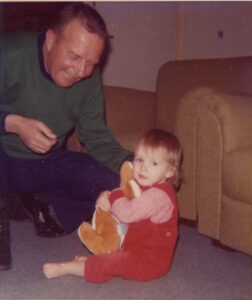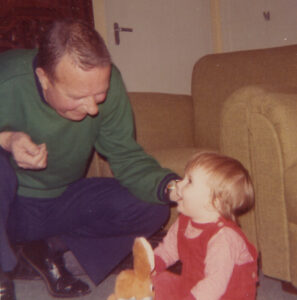After being away last week, I tried to get back into the swing of things once we arrived home. We’ve had a heat wave, eerily red suns from smoke from Canadian wildfires, a tornado warning, and a heavy thunderstorm that gave us a pond in our backyard. I also took a trip to the ER with a calf muscle injury that I am 98% recovered from at this point.
So, not exactly conducive to concentrated working.
I hunkered down, however, and actually have had a pretty productive week. Since I last wrote, I proofread 40,500 words of my mother’s family history book. And still found mistakes when I went back to quickly look at something in a chapter I had already proofread. I will likely need to read the entire thing one more time before giving it to someone else to proofread. My second read-through will probably be out loud, since most of my problem is shifting tenses, and hearing it will help me catch that.
I also updated several family trees that will go in the book. Apparently, I have been working on this a lot longer than I thought, since people in the trees who have died were still alive, and children who are alive now had not been born. One chapter had no tree at all yet, so I created that one from scratch.
Lastly, I found an image I plan to use in multiple places in my book. One spot will likely be the back cover, and the other places will be as backgrounds for chapter title pages. I had wanted to use maps of Ireland and the UK in strategic places, but could not find one I liked that was not prohibited by copyright. I finally found a line drawing of the British Isles that allows use for reprinting in books with no copyright attached. I will, of course, be using attribution, as they requested.
So I am making progress. After I finish the chapter I am proofing, I have five more to proofread, and one chapter to write from scratch. It is very hard to write a family history book while you are still actively researching, because you keep finding more information to add!
Although there is much work remaining, it is work I enjoy, this strange co-mingling of the quick and the dead. Through my pen, the dead live again, and hopefully my work will live on after I am dead. Those who think time moves only forward never viewed the world through the eyes of a genealogist—the past is ever with us, and colors every aspect of the present.


Indexing Headaches—CoronaLife Day 523
I have spent the entire day with the Norwegians.
One line of my mother’s family goes back to Norway. The connection is very far back, so far that much of it may be more properly classified as “lore” rather than provable fact, but it’s fun any way you look at it.
The Norwegian chapter is a long one, spanning some 200+ years, and is an epic adventure of the Orkney and Shetland Islands, as well as vast reaches of northern Scotland. Between the Norwegian names and the many places touched upon, it is enough to make any proofreader’s head hurt.
I am familiar enough with these people now that the spelling is not much of an issue for me. What really hung me up was the indexing. I spent pretty literally the whole day on it. Some of it was my own fault, because I forgot what I had done in previous sections.
For instance, I forgot I had put the kings of Scotland under the heading “Scottish Royalty” because I was also placing their children under that heading. So today I entered them all as “Kings of Scotland” and then had to go back and change them.
Or I forgot that when I indexed a woman as the wife of someone, I put that info in parentheses, not just offset with a comma. Luckily there were not many wives, so it was not as laborious as it sounds.
Then there are just the crazy indexing errors that are basically typos. When entering the index coding in Word, if you don’t do it exactly the same each time, it will show up as a separate person. For example, “Gans:Kerry”, is not the same as “Gans:Kerry ”. Most of the time I avoided having issues by simply copying and pasting the same code for the same person, but occasionally I’d run across someone I’d missed and have to re-type it from scratch. Or it would be a person I had entered far earlier in the book, and had forgotten exactly how I had entered him (but THOUGHT I remembered), and then when I would check the index there he’d be, twice.
I have gotten all the Norwegians indexed now, however, and can move on to my next chapter. Seven chapters left to wrap up the summer with.